I would like to overplot a swarmplot and regplot in seaborn, so that I can have a y=x line through my swarmplot.
Here is my code:
import matplotlib.pyplot as plt
import seaborn as sns
sns.regplot(y=y, x=x, marker=' ', color='k')
sns.swarmplot(x=x_data, y=y_data)
I don't get any errors when I plot, but the regplot never shows on the plot. How can I fix this?
EDIT: My regplot and swarmplot don't overplot and instead, plot in the same frame but separated by some unspecified y amount. If I flip them so regplot is above the call to swarmplot, regplot doesn't show up at all.
import matplotlib.pyplot as plt
import seaborn as sns
import pandas as pd
df = pd.DataFrame({"x":x_data,"y":y_data} )
sns.regplot(y="y", x="x", data= df, color='k', scatter_kws={"alpha" : 0.0})
sns.swarmplot(y="y", x="x", data= df)
SECOND EDIT: The double axis solution from below works beautifully!


